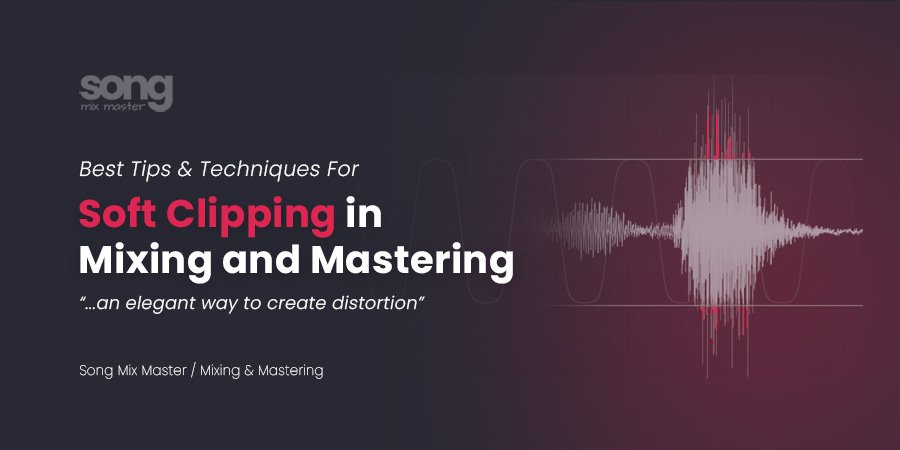Over time I’ve found that one of the key techniques in shaping and controlling audio signals in mixing and mastering is the use of soft clipping.
In this article, I’ll explain what soft clipping is, how it works, and the various ways it can be applied to improve the sound quality in your audio projects.
What is Soft Clipping?
A soft clipper is a hardware device or audio plugin used to gently round off the peaks of an audio signal once they exceed a certain threshold. Unlike hard clipping, which abruptly cuts off the signal peaks, soft clipping introduces a smoother form of distortion.
Check here my list of Best Soft-Clipper Plugins for Mixing and Mastering
Soft clippers are commonly used in music production, audio mastering, and broadcasting to adjust the volume of signals without creating harsh distortions or unwanted artifacts.
Soft clipping involves gently rounding off the peaks of an audio signal once they exceed a certain threshold, creating a smoother form of distortion compared to the abrupt cutoff characteristic of hard clipping.
They allow for more precise control over the dynamics and tone of the signal while producing a pleasant and natural sound distortion.
Soft clippers come in various forms, including standalone audio processors and integrated features within digital audio workstations (DAWs) or plugins.
They often provide a range of settings and parameters to adjust the intensity and characteristics of the distortion to achieve the desired sonic results.

Advantages of Soft Clipping
In general, soft clipping provides an elegant way to create distortion that enhances or alters the sound of a signal without creating the hard edges and unwanted artifacts often associated with hard clipping.
Soft clipping gently rounds off the peaks of waveforms as they exceed the threshold, creating a smoother transition between distorted and non-distorted signals.
This method helps preserve the dynamics of the signal better than hard clipping, which often significantly reduces dynamics, allowing for more precise control over volume and nuances.
The distortion produced by soft clipping is typically perceived as more pleasant and natural, making it ideal for applications where a natural sound character is desired.
Additionally, soft clipping is highly versatile, and suitable for a wide range of applications from music production and mastering to broadcasting and live sound reinforcement, shaping, smoothing, or optimizing signals as needed.
Applications of Soft Clipper
Soft clipping can be employed in various audio editing scenarios to achieve distinct sound effects or optimize audio material. It can be used to distort guitar, bass, or synthesizer tracks in music production, creating aggressive and distorted sounds often found in rock, metal, or electronic music.
- In broadcasting and recording, soft clipping helps limit the maximum volume of an audio signal and prevent hard clipping, ensuring controlled dynamics.
- During audio mastering, it increases the overall volume and prepares the signal for release, optimizing consistency across playback devices.
- For sound shaping and design, soft clipping emphasizes or shapes specific frequency ranges, such as boosting deep bass or cutting high frequencies, giving the signal a particular character.
- In sound design and cinematic music production, it creates special effects, distorting sound effects or adding irregularities to evoke specific moods or atmospheres.
- Soft clipping can also correct recordings by trimming unwanted peaks caused by loud passages or technical issues, ensuring a clean and smooth recording.
- In live sound, soft clipping optimizes the volume of microphones, instruments, or the entire mix, preventing clipping and maintaining consistent sound quality.
- During the restoration and processing of historical recordings, soft clipping removes unwanted noise or hiss by trimming distorted areas, improving sound quality.
- Additionally, it normalizes the volume of recordings for streaming, ensuring the audio sounds consistent and competitive across different playback devices and platforms.
In Conclusion
Soft clipping is an essential tool for sound engineers and music producers, providing a versatile and effective method for managing signal dynamics, enhancing sound character, and creating pleasant, natural distortion.
Its ability to smooth out peaks without introducing harsh artifacts makes it a go-to technique in various audio applications.
By incorporating soft clipping into your workflow, you can take full control of your audio signals, delivering exceptional quality and creativity in every mix.


Disclaimer: Any references to any brands on this website/webpage, including reference to products, trademarks, brands and companies, are provided for description purposes only. We don't have any association with or endorsement by these brands or companies. Some of the links on our blog may be affiliate links. This means if you click on these links and make a purchase, we may earn a commission at no extra cost to you.
Need Professional Mixing & Mastering?
You may also like to read...
Best Reference VST Plugins for Comparison (A/B Plugins)
How To Do FL Studio Sidechain Compression Like a PRO
What is RMS in Music Mastering – Understanding RMS Levels
Harnessing Distortion and Saturation for Vibrant Mixes
Hardware Vs. Plug-ins – Can Audio Plug-ins Replace Hardware?
Mastering Dynamics: How To Use The Waves MV2 Plugin